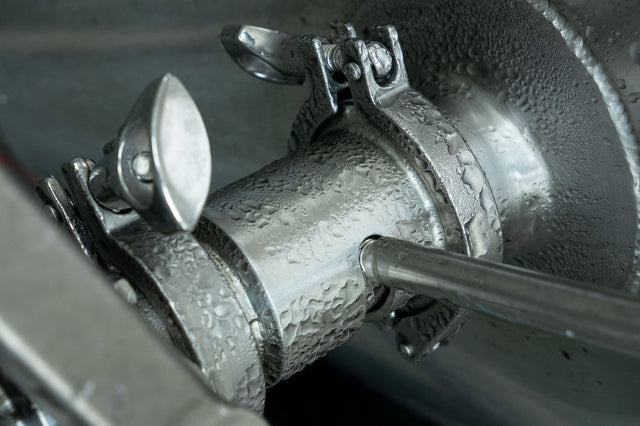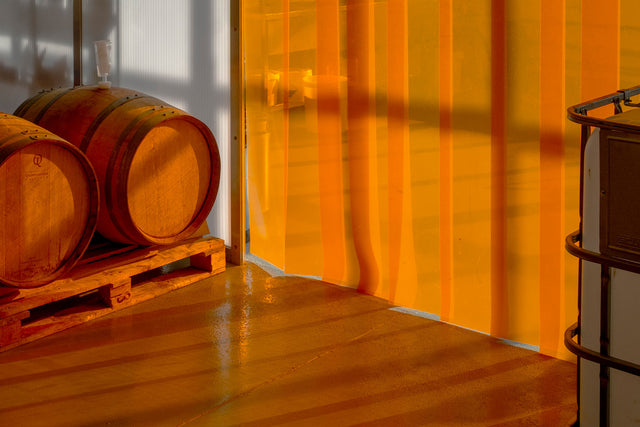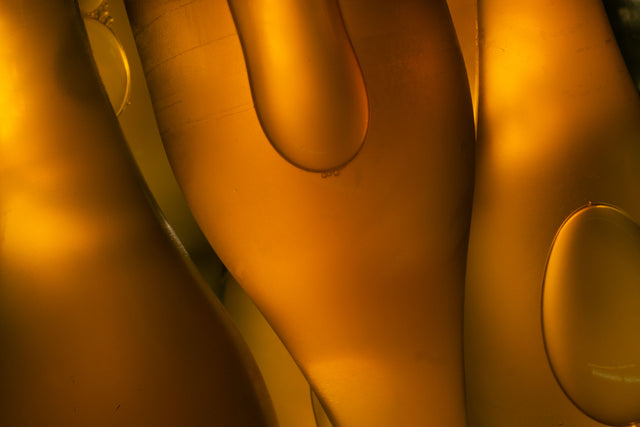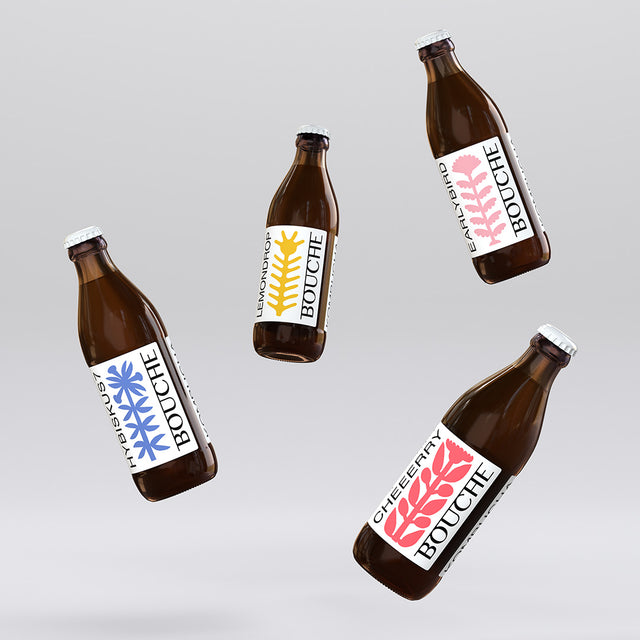PRODUCTION • How we do it
From the beginning, BOUCHE stood for its collective understanding that the development of complex flavor structures is the decisive factor on which the development of our kombucha is based. Our goal is to develop distinctive products with a characteristic signature.
Through a step-by-step approach and extensive experimentation, we gain the fundamental knowledge for our production today.
It was very important to us to first create a perfect base before diving into the topic of flavor profiles and concentrating on the subsequent processes.
Initially, we fermented a batch of black and green tea, sugar and scoby (Symbiotic Cultures of Bacteria and Yeast , colloquially known as tea mushroom) in small, open containers. Kombucha in the most classic sense, there was nothing different or new about it. And the kombucha tasted good, theoretically we could have continued from that point. However, we noticed that the open fermentation brought about variations in taste with each run. Because of environmental influences such as an unstable room temperature, each fermentation had a different result. In order to achieve consistent results, we wanted to find a way to ferment kombucha in a closed system without scoby.

Closed fermentation does exactly that: A consistent, repeatable atmosphere that can be easily regulated. If necessary, oxygen can be added or withdrawn from the system. And via the tank's jacket, the heat regulation can be adjusted to speed up or slow down fermentation. Instead of a Scoby, we control the fermentation using the starter culture we developed - more on this in the following section.
Through these fundamental changes within our manufacturing process, we began to move away from the home brewing approach. The resulting kombucha now forms the flavor basis of all our varieties. What sounds very simple in retrospect is the result of an extensive development phase with countless fermentation runs and changing a wide variety of parameters. However, the optimization of our kombucha is by no means complete - rather, it is an ongoing process that expands the more we learn about kombucha and its production.

The components of our liquid starter culture, just like the basic kombucha, are black and green tea as well as beet sugar from Germany. It is therefore Kombucha in concentrated form and forms the basis of its acid profile. Its high proportion of bacteria and yeast cultures make kombucha a lively drink.
As soon as the fermentation has the desired acidity, it goes into closed stainless steel fermentation tanks with fresh black and green tea (which has different proportions of Darjeeling, Earl Gray and Sencha depending on the variety) and additional beet sugar, in which the basic kombucha is fermented (closed fermentation). The starter culture triggers the fermentation process; the yeasts and bacteria it contains begin to process the sugar into alcohol, which is converted into acetic and lactic acid as fermentation progresses. The result is a clear-tasting, balanced kombucha, which we can expand in countless directions in the following step.
Our search for complex flavor profiles and the extensive research involved ultimately led us to integrate traditional methods of brewing beer and wine making into our brewing process. The flavoring we developed is a process similar to maceration that gives our kombucha varieties their taste.






